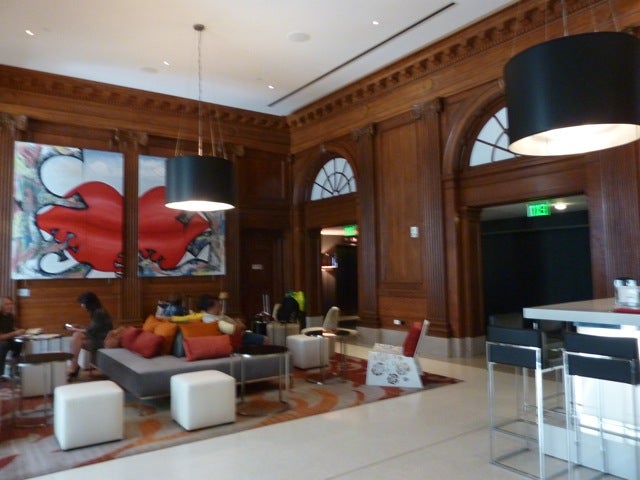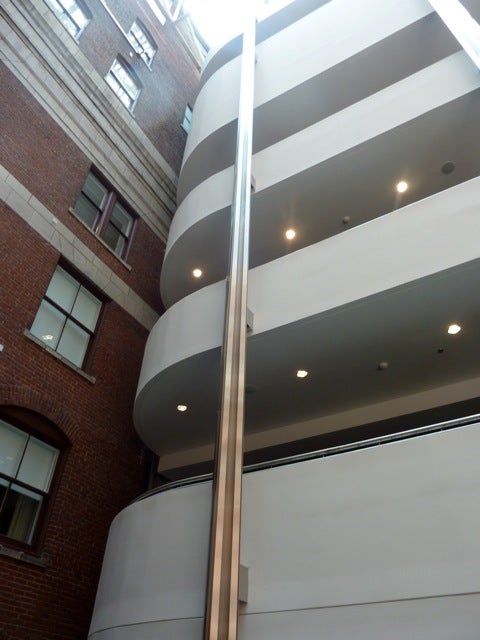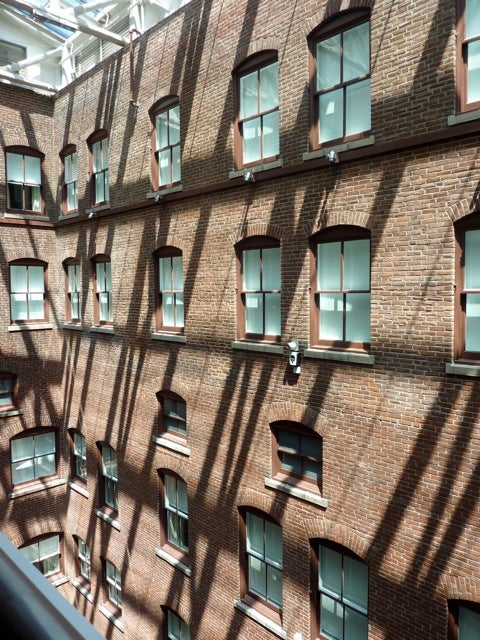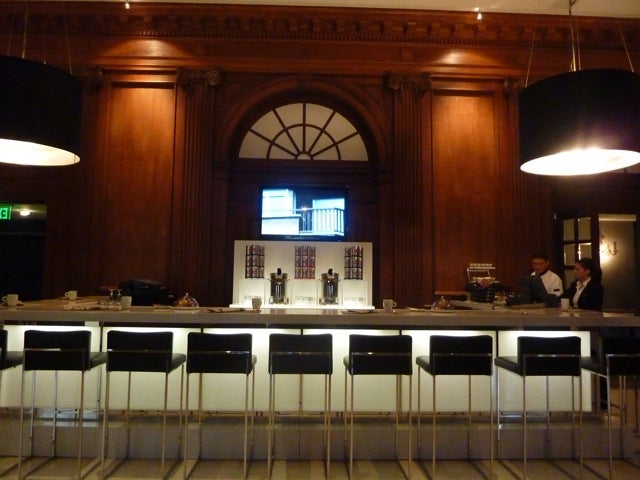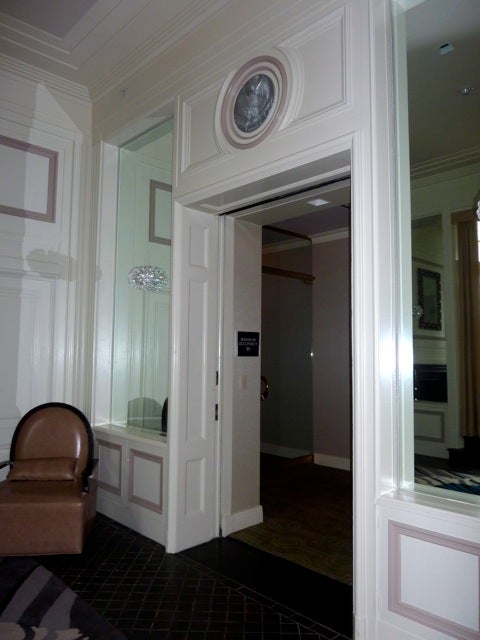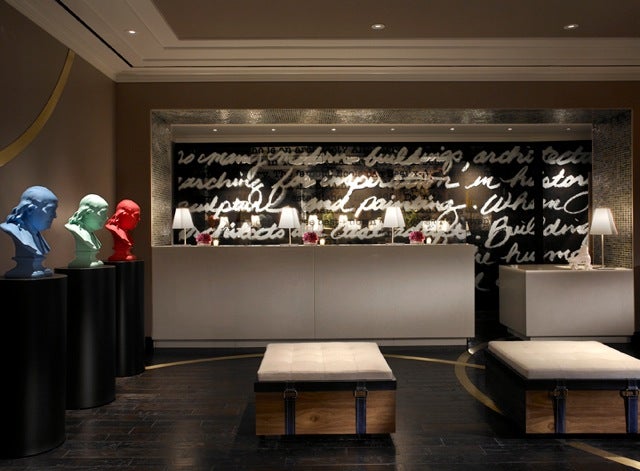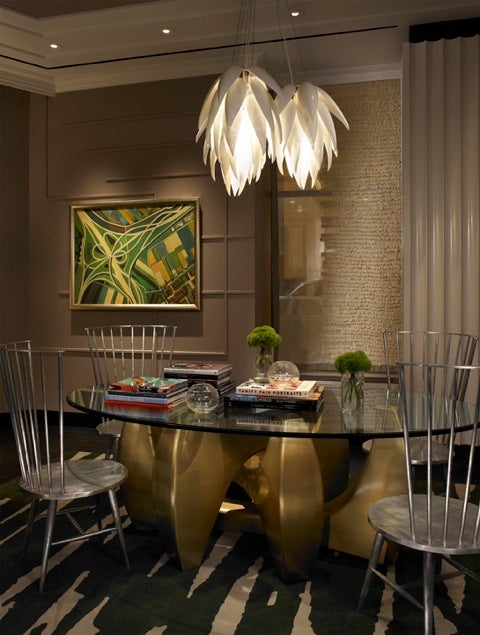Hip Center City hotels blend contemporary design with architectural preservation
Philadelphia’s lineup of hotels is prosaic; a grande dame here, a business hotel there, a family-friendly one over there. But its recently received a jolt with the addition of two fresh boutique properties, last year’s Hotel Palomar, from Kimpton, and this May’s Le Meredien.
Like the Loews PSFS before them, both hotels are fine examples of adaptive reuse — they’ve brought new vitality to what were previously run-down, half-filled office buildings.
The ways in which each has achieved that are quite different, and they provide eye-opening lessons about the points where contemporary design and architectural preservation intersect.
Located in the old Architect’s Building at 17th and Sansom, built in 1929, the Palomar was particularly challenged by the mixture since it faced one more mandate: to hone to strict sustainability constraints as the chain sought to obtain its first LEED gold certification.
For L.A.-based interior designer Dayna Lee, that meant finding ways to make the limited patterns and colors currently offered by green fabric makers more visually interesting. Lee says that using an artistic grab bag of seamstress tricks like “decorative stitching, rusching, ruffling, and piercing” helped her enliven the hotel’s window treatments, dress pillows, and rugs.
A few blocks away at 15th and Arch, Le Meridien faced its own obstacles: a 1911 building designed by Horace Trumbauer (he of the Union League, Philadelphia Museum of Art, and other Philly institutions) with a meandering layout — the result of several expansions — and a patchwork assemblage of hanging-in-there tenants.
“It was a very complicated renovation,” says John Hayes, Jr., a principal at local historic restoration specialist Blackney Hayes. “We joked that there were 202 rooms — and 202 room types. Many of the existing conditions were not observable until after the demolition, so getting all of these disparate elements to form one cohesive project was quite challenging.”
Chief among the problems: an interior lightwell that in the 1970s was turned into a skylit atrium, featuring steel balconies that delighted the renovation architects with their retro hipness. Now, elevators let out onto the balconies, which overhang the atrium. An oblong hole in the middle of each floor remains, surrounded by exterior brickwork. A problematic design feature, yes, but one that offers drama and surprise to visitors.
Erected as a showcase intellectual center for the YMCA — the upper floors of the 8-story building once contained dormitories — the building eventually served as headquarters for the District Attorney’s office. Indeed, one of the hotel’s showstoppers is the Y’s old study hall, which later served as the personal office of the D.A.
It’s easy to imagine the rank and file ADAs slaving over their computers and legal pads, while folks like Ed Rendell, Ron Castille, and Lynne Abraham lorded it up in this richly-panelled room. Watched over by the great names of Homer and Goethe inscribed near the ceiling, they could easily cast longing glances at the tower of City Hall looming just outside the windows.
The Palomar, though pretty much gutted, also has enough of the good stuff left to intrigue architecture aficionados. It too offers a (much smaller) library — a refined, sunlit room that features a black marble fireplace, crown molding, coffered ceilings, and pocket doors. Its simplicity and symmetry say Philadelphia Federal not Art Deco, the period in which the building was erected.
Architects also preserved the building’s ornate second-floor elevator lobby, which isn’t Deco, Federal or any other one thing. Instead, Lee speculates, this mashup of Moorish and Mediterranean tilework may have been used as a way for resident architects to showcase their diverse talents and styles.
In her own nod to the building’s roots as the place where architects came to roost, Lee has added artwork that’s about, she says, “study and process.” Several complex paper constructions incorporate art history textbooks and even the Palomar’s blueprints. At the entry to the hotel, Lee’s placed her own work, a sort of pop-up book that references architectural tomes.
Le Meredien, too, looks to original art to add pizazz to its already jazzy red, black and white interiors. In the dining room, for example, a mirrored work pays homage to Philly’s “LOVE” sculpture by repeating the word over and over in smudgy, lipstick-red paint.
In both hotels, the lobbies are the stars. The Palomar opts for cozy yet whimsical modernity, with neon-hued busts of Ben Franklin, curving sofas, and a great fireplace of sculpted white lacquer that’s as slinkily Art Deco as a Jean Harlow bias gown.
Le Meredien takes its amazing dark panelling — much of it original, and some of it cleverly reconstructed — as a jumping off point, peppering the spaces with clean, linear white furniture that contrasts dramatically with, while never stealing any thunder from, the building’s bones.
Each property clearly understands the role of its contemporary interventions. “The criteria of the historical consultants was that any surface material we applied should contrast with the existing ones,” Lee says, “so the two are never confused.”
Hayes echoes that sentiment. “The design concept was to respect the historic character with new elements touching the building in the lightest, most graceful way,” he says. “None of the old stuff is actually engaged by any of the new — the bar backs and communal tables, the dropped ceilings, the lighting, even the exterior glass canopy — all appear to float away from the original marble, wood, and plaster surfaces.”
Squeaking in under the wire before the recession put other projects on hold, these two hotels complement each other and enhance the Philadelphia design scene. At last, we’ve been gifted with the “hip” hotel factor that much smaller cities have already embraced for a decade. And, we can all enjoy the fruits of complex renovations that have returned the luster to two long-neglected, much-beloved structures.
Contact JoAnn Greco at joanngreco.com Check out her new online magazine, TheCityTraveler at thecitytraveler.com
WHYY is your source for fact-based, in-depth journalism and information. As a nonprofit organization, we rely on financial support from readers like you. Please give today.



